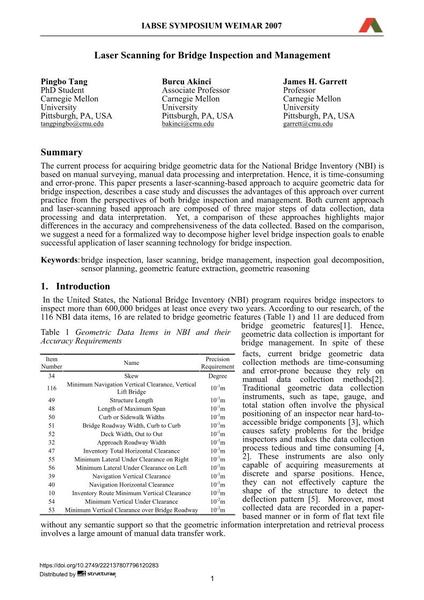Laser scanning for bridge inspection and management

|
|
|||||||||||
Détails bibliographiques
| Auteur(s): |
Pingbo Tang
Burcu Akinci James H. Garrett |
||||
|---|---|---|---|---|---|
| Médium: | papier de conférence | ||||
| Langue(s): | anglais | ||||
| Conférence: | IABSE Symposium: Improving Infrastructure Worldwide, Weimar, Germany, 19-21 September 2007 | ||||
| Publié dans: | IABSE Symposium Weimar 2007 | ||||
|
|||||
| Page(s): | 206-207 | ||||
| Nombre total de pages (du PDF): | 8 | ||||
| Année: | 2007 | ||||
| DOI: | 10.2749/222137807796120283 | ||||
| Abstrait: |
The current process for acquiring bridge geometric data for the National Bridge Inventory (NBI) is based on manual surveying, manual data processing and interpretation. Hence, it is time-consuming and error-prone. This paper presents a laser-scanning-based approach to acquire geometric data for bridge inspection, describes a case study and discusses the advantages of this approach over current practice from the perspectives of both bridge inspection and management. Both current approach and laser-scanning based approach are composed of three major steps of data collection, data processing and data interpretation. Yet, a comparison of these approaches highlights major differences in the accuracy and comprehensiveness of the data collected. Based on the comparison, we suggest a need for a formalized way to decompose higher level bridge inspection goals to enable successful application of laser scanning technology for bridge inspection. |
||||
